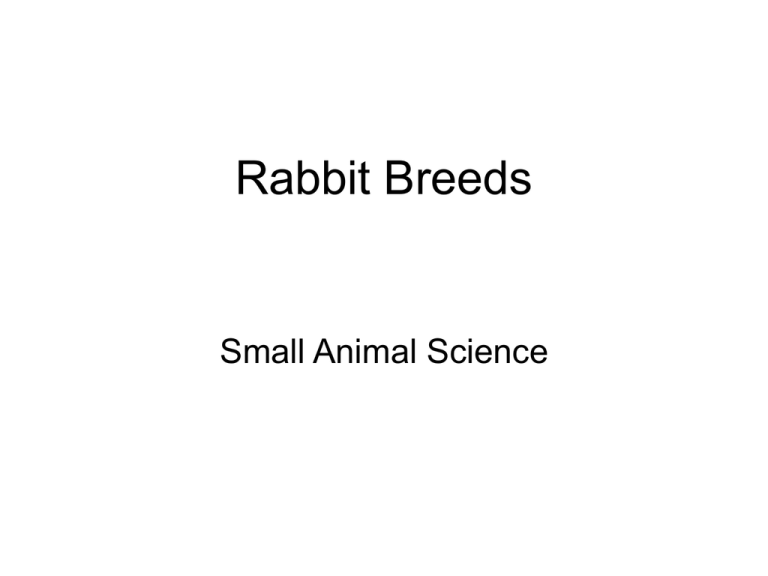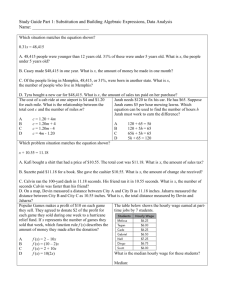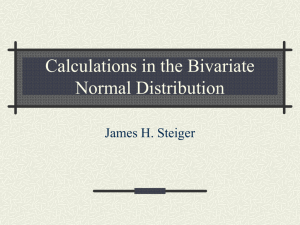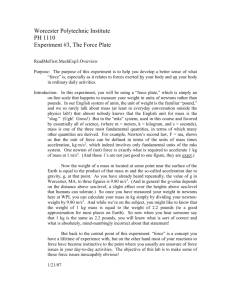Origin - Derry Area School District
advertisement

Rabbit Breeds Small Animal Science Dwarf or Miniature Britannia Petite Netherland Dwarf Origin: Old English breed known as “Polish”. Colors/Patterns: In U.S. white with red eyes, and many other colors Weight: Less than 2 ½ pounds Other: Currently recognized as smallest of standard breeds. Origin: Early 20th century from a Dutch rabbit and a wild rabbit. Developed in Holland. Colors/Patterns: More different colors than any other breed. Weight: 2 ½ pounds Other: Small, stocky, and compact. Origin: Himalayan Mountain area Colors/Patterns: Snow white, with the nose, ears, feet, & tail becoming black Weight: 2 ½ to 4 ½ pounds Other: Ears stand erect Origin: Unknown Colors/Patterns: Five colors: Black w/brown eyes, Blue w/blue-gray eyes, Chocolate w/ Brown eyes, White w/ruby-red eyes and White w/blue eyes. Weight: 2½ to 3½ pounds Other: Believed to have been Developed as an albino Dutch rabbit. Himalayan Polish Dwarf Hotot Origin: In 1970’2 in 2 different parts of Germany Colors/Patterns: Entire body is white w/ only markings being a very thin black eye band around each eye Weight: Maximum of 3¼ pounds Other: The breed came from 2 different approaches of breeding which breeders merged together to improve size and vigor. Jersey Wooly Origin: New Jersey in late 1970’s Colors/Patterns: Selfs, Shaded, Agouti, Tan, and Pointed Weight: Less than 3½ pounds Other: Cross between Netherland Dwarf and Angoras. Ears are 2-3 inches long. Origin: Netherlands Colors/Patterns: Solid or broken varieties. Weight: Less than 4 pounds Other: Apple-shaped head that is short and broad. Developed by breeding Netherland Dwarfs to French Lops and then by breeding offspring to English Lops to enhance ear carriage. Origin: Unknown in the 1980’s Colors/Patterns: Broken patterns Weight: Less than 4 pounds Other: Cross between the French Angora and Holland Lops. A small lopeared breed. Holland Lop American Fuzzy Lop Mini Rex Origin: Unknown Colors/Patterns: Blue, Californian, Castor, Chinchilla, Lynx, Opal, Red, Seal, Tortoise, White, and Broken Weight: less than 4½ pounds Other: Developed by crossing standard Rex rabbits w/ Netherland Dwarf to get smaller animals. Small Dutch Origin: Developed in England, although originated in Holland Colors/Patterns: Black, Blue, Chocolate, Tortoise, Steel Gray, and Gray. Weight: 3½ to 5½ pounds Other: Colored patches on each side of the head that encircle the eyes and ears. White blaze on forehead & down over the front part of rabbit, including front legs. The rear half of the animal is colored the same as the head patches. White also appears halfway up on the rear paws. Tan Origin: England as a cross between a Dutch rabbit and wild rabbit. Colors/Patterns: Blue, Chocolate, & Lilac w/ tan undersides Weight: 4 to 5½ pounds for bucks & 4 to 6 pounds for does Other: Originally known as the Black and Tan breed Origin: England, France, & Germany Colors/Patterns: Brown, Fawn, & Gray Weight: 4 to 7 pounds Other: Fur of this rabbit has large numbers of pigment-free, silvery-white tips, giving it the silver color. Origin: Florida Colors/Patterns: White Weight: 2½ to 5 pounds Other: Developed for a small meat rabbit, and a small laboratory rabbit. Silver Florida White Havana Origin: Result of a mutation that occurred in 1898. Colors/Patterns: Black, Blue, & Chocolate. Weight: 4½ to 6½ pounds Other: Small, compact, and meaty Mini Lop Origin: Germany, where it is known as the Klein Widder Colors/Patterns: Agouti and White; solid or broken Weight: 4½ to 6½ pounds Other: Cross between German Big Lop & Little Chinchilla rabbit. Scaled down version of the French Lop. Has massive, thickset body Medium Origin: Introduced to U.S. from England Colors/Patterns: Background color is white And is accepted in 7 color varieties: Black, Blue, Chocolate, Gold, Gray, Lilac, & Tortoise Weight: 5 to 8 pounds Other: Butterfly nose pattern, eye circles, cheek spots, and colored ears, and other spots on body Origin: Developed in 1913 by a French Engineer, M.J. Dybowski Colors/Patterns: Similar to that of the Chinchilla w/undercolor of dark-slate Blue, intermediate portion is pearl, top portion narrow black band and a light band above that. Weight: Bucks 5½ to 7½ pounds and Does 6 to 8 pounds Other: Cross from a wild gray rabbit and a Himalayan. Rather compact and chubby body English Spots Standard Chinchilla English Angora Lilac Origin: Ankara, Turkey approximately Hundreds of years ago Colors/Patterns: Ruby-eyed White, Pointed White, Self, & Agouti Weight: 5 to 7½ pounds Other: Entire body covered in wool Origin: Unknown Colors/Patterns: Dove-gray w/ slight pink sheen (pinky-dove) Weight: 6 to 7 pounds Other: The Lilac is a diluted Havana Brown that sometimes appears in litters of Havana rabbits. Origin: First appeared 50 years ago In nest box of a Std. Chinchilla Colors/Patterns: Black, Blue, Chocolate, and Sable varieties Weight: Buck 6 to 8½ pounds & Does 7 to 9½ pounds Other: Fur is about 1 inch in length and is interspersed with silver-tipped guard hairs. Silver Martin Origin: Flanders in Belgium and Introduced into England in 1874 and U.S. in 1888 Colors/Patterns: Varies from a fox to Mahogany red, w/ chestnut shading on the sides. Brilliant black tickling appears on the body and along edges of ears. Weight: 6 to 9 pounds Other: Known as the race horse or Greyhound of rabbit family. Fur is close lying and of rather harsh texture. Belgian Hare Rhinelander Harlequin Origin: Developed in Germany Colors/Patterns: All colors are acceptable, a Tricolored variety in white, black, and blue Weight: Bucks 6½ to 9½ pounds & Does 7 to 10 pounds Other: Unique body type being rounded and almost cylindrical, avoiding heaviness in either shoulders or hindquarters. Butterfly marking on nose, cheek spots, and eye rings. Origin: Originated in Northern France & Belgium in the 1880’2 Colors/Patterns: Markings are its distinctive features. 2 basic body colors are orange or white with black, chocolate, lilac, or blue markings. Weight: Bucks 6½ to 9 pounds & does 7 to 9½ pounds Other: Orange patterns are referred to as “Japanese” and white patterns referred to as “Magpie”. Origin: Originated in 1919 Colors/Patterns: Deep sepia brown & delicate shadings Weight: Bucks 7 pounds or better & Does 8 pounds or better Other: Head, ears, and feet have a purple or a shaded brown sheen Origin: Created by L.P. Meyer of Canada Colors/Patterns: Agouti, Pointed White, Self, Shaded, Solid, and Ticked Weight: 8 pounds Other: Wool has good length and density and a brilliant satin sheen. Wool is finer than normal Angora wool and has a soft, silky texture. Satin Angora Sable French Angora Origin: Originated in the French departments of Vosges, Savoy, Magence, Normandy, and Jura Colors/Patterns: Weight: More than 7½ pounds Other: Not as heavily covered in wool compared to the English. Tail is covered by wool but the feet and legs are furred only to the first joint. Wool is coarse, and the ideal length is about 2½ inches. Rex Origin: Around 1919 Colors/Patterns: Black, Blue, Californian, Castor, Chinchilla, Chocolate, Lilac, Lynx, Opal, Red, Sable, Seal, White, and Broken Weight: Bucks 7 ½ pounds and does 8 to 10½ pounds Other: Short hair coat, with guard hairs being of the same length as the underfur. The fur also stands at right angles to the skin, is about 3/5 inch long and has a very soft, plush feel. Large Origin: Originated in the 19th century in the city of Beveren, Belgium Colors/Patterns: Blue, Blue-eyed White, & Black Weight: Bucks weigh 8 to 10 pounds and Does 9 to 11 pounds Other: A full head with an outward curvature Between the eyes and nose is characteristic Of this breed. Origin: Produced in 1928 by George West Colors/Patterns: White w/ black colored Nose, ears, feet, and tail; eyes are red Weight: Bucks weigh 8 to 10 pounds & Does weigh 8½ to 10½ pounds Other: Produced to be a better commercial rabbit. Californian Beveren Hotot Origin: France, is known as the Blanc de Hotot & around 1912 Colors/Patterns: Shiny white w/ thin black band surrounding the eyes Weight: Bucks 8 to 10 pounds & Does 9 to 11 pounds Other: Believed that native French-spotted rabbits and the Checkered Giant used in developing this breed. Palomino Origin: Developed by Mark Youngs of Washington Colors/Patterns: Golden and Lynx Weight: Bucks weigh 8 to 10 punds & Does weigh 9 to 11 pounds Other: Several breeds were used to produce this breed with distinctive colors Origin: Developed by Ellis Houseman of Montana Colors/Patterns: Rust or cinnamon ground; the fur is ticked w/smoke-gray Origin: Mutation in 1930 of a Havana across the back, sides show a smokelitter gray shading and the underfur is Colors/Patterns: Black, Blue, Californian, Chichilla, Chocolate, Copper, Red, Siamese, orange and fur around head and ears are darker shadind White, and Broken Weight: Bucks weigh 8½ to 10½ pounds Weight: Bucks weigh 8½ to 10½ pounds & & does weigh 9 to 11 pounds Does weigh 9 to 11 pounds Other:Well-filled and meaty body Other: The new “Satin” breeds have more uniformed descriptions of type and fur Satin Cinnamon Crème d’Argent Origin: Originated in France Colors/Patterns: Crème color with a bright orange underfur; guard hairs are orange Weight: Bucks weigh 8 to 10 pounds & Does weigh 8½ to 10 pounds Other: Appeared in U.S. in 1934 and Are becoming popular because of their Luxurious and richly colored fur Champagne d’Argent Origin: Originated in France Colors/Patterns: Bluish-white with the underfur being a dark, slate blue with jet black guard hairs Weight: Bucks weigh 9 to 11 pounds & does weigh9 ½ to 12 pounds Other: Appeared in U.S. in 1934 and Are becoming popular because of their Luxurious and richly colored fur Origin: United States Colors/Patterns: Blue & White color Varieties Weight: Bucks weigh 9 to 11 pounds and Does weigh 10 to 12 pounds Other: Believed to have been developed from throwback, called “sports” of blue rabbits. ideal body type is described as “Mandolin” because the arch of the back resembling it from the hindquarters to the shoulders. American Origin: Unknown Colors/Patterns: Same as the Standard Chinchilla Weight: Bucks weigh 9 to 11 pounds & does weigh 10 to 12 pounds Other: A result of selective breeding for size from the Standard Chinchilla. Larger than the Standard & referred to the “Heavyweight” Chinchilla American Chinchilla New Zealand English Lops Origin: Not known, but first appeared in Algiers, North Africa and then spread to England Colors/Patterns: Self & Broken varieties Weight: Bucks weigh 9 pounds and over & does weigh 10 pounds and over Other: Breeders competed to increase the ear length of 23 to 24 inches long. In 1885, the first lop appeared to have ears over 24 inches. The record for the longest ears is 28½” Origin: Originated in California & Indiana almost simultaneously. Colors/Patterns: Red, White, & Black Weight: Bucks weigh 9 to 11 pounds & Does weigh 10 to 12 pounds Other: The White New Zealand has Been the leading choice for commercial Rabbit producers in the U.S. Primarily Raised for meat production. Silver Fox Origin: Originated & developed in the 1920’s by W.B. Garland of North Canton, Ohio Colors/Patterns: Chocolate and Blue Weight: Bucks weigh 9 to 11 pounds & does weigh 10 to 12 pounds Other: Originally known as the American Silver Fox. Unique features are its evenly silvered fur resembling fox fur with a length of 1 to 1 ½ inches long and the lack of fly-back fur when stroked. Giant Giant Angora Origin: Originated by Louise Walsh of Taunton, Maine Colors/Patterns: Ruby-eyed White & Blue-eyed White Weight: Bucks weigh more than 8½ pounds & does weigh more than 9 pounds Other: Main purpose of developing this breed was to produce an animal to have a maximum amount of wool production. Wool types: Underwool-medium-fine, soft, & delicately waved. Awn Fluff-a soft, wavy wool with a guard hair tip found between the underwool. Awn-Hair-which is strong, straight hair protruding above the awn fluff French Lop Origin: First bred around 1850 in France Colors/Patterns: Any solid color & any color in combination with white. Weight: Bucks weigh more than 9 pounds & does weigh more than 10 pounds Other: This rabbit’s ears are shorter than those of the English Lop. The ears hang down in a horseshoe shape from the crown approx. 1 ½ inches or more below the muzzle. Body is very massive and heavily muscled. Origin: In Germany, 1904 Colors/Patterns: White w/black or Blue markings. Weight: Bucks weigh 11 pounds & over & does weigh 12 pounds & over Other: Colored butterfly nose, eye circles, cheek spots, spine markings, tail, & side markings are well formed & distinct Checkered Giant Origin: Developed by Ed Stahl of Missouri Colors/Patterns: Maintains Chinchilla Color patterns Weight: Bucks weigh 12 to 15 pounds & Does weigh 13 to 16 pounds Other: Result of selective cross-breeding and addition of Flemish Giant blood Giant Chinchilla Flemish Giant Origin: Early development not known, breed originated in Belgium Colors/Patterns: Steel Gray, Light Gray, Sandy, Black, Blue, White, and Fawn Weight: Bucks weigh more than 12 pounds & does weigh over 13 pounds Other: 15 to 18 pound Flemish Giants are common. Breeders In the U.S. are given credit for producing the different colors







